Clean, green energy helps deliver babies
In a remote community in PNG, where there is no power, medical clinics are left in darkness at night. When women go into labour in the early hours of the morning, the duty nurse must hold a torch in her mouth, freeing her hands to help deliver the baby.
Now Save the Children is helping to bring renewable energy to some of the most under resourced medical clinics in the Pacific. Rachel Tarsan, a staff member with Save the Children PNG, gives a first-hand account of travelling down the country’s vast Sepik river system to illuminate often forgotten medical facilities.
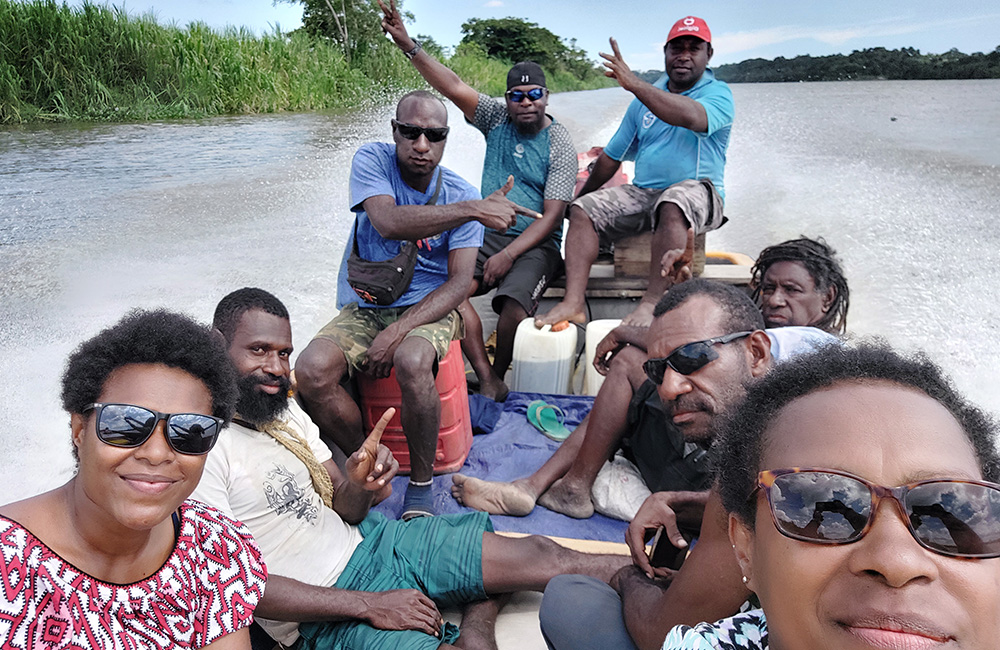
Rachel (bottom right), the program team and crew travel down the Sepik River
to deliver solar panels and generators to health clinics.
On the move
After an hour’s flight from Port Moresby to the capital of East Sepik province, we drive another two hours to Angoram on a dull and cloudy Friday afternoon. We’re loaded up with solar panels and generators marked for two health facilities dotted along the winding Sepik River.
Travel to this part of the country is mostly by small metal dingy, with almost no road access. Health clinics operating in this part of PNG are staffed by incredibly dedicated nurses and doctors, who often have little more to work with than a tin roof, scarce supplies and no electricity.
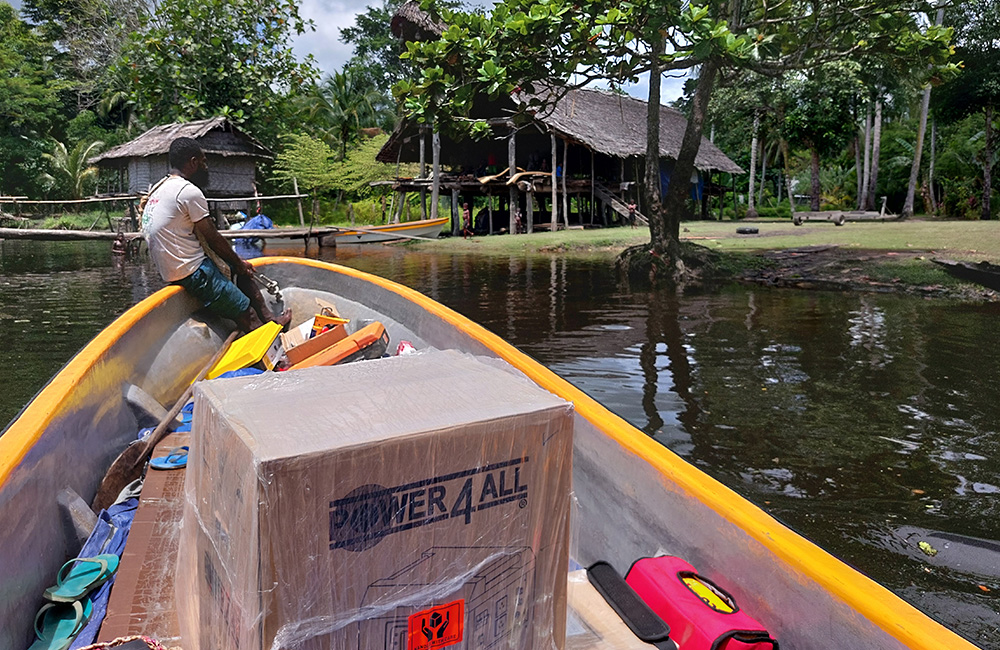
Easing into Samban Village with the solar panel and generator on the dingy.
Meeting the team, dodging the crocodiles
Overnighting in Angoram district, we’re met by our Safe Children, Healthy Mothers project team who have been tasked with lighting up health facilities with green, clean solar power. Together with our government partners, they’re making sure doctors and nurses have the resources to deliver babies safely - even in the middle of the night.
The next day we load a dingy with a solar panel and generator, leaving Angoram at 9 o’clock in the morning. The crew reminds us to keep our hands and legs inside the dingy as the Sepik River is full of crocodiles. We pass stilt houses rising from the river and villagers in long dugout canoes returning from an early morning visit to the market. After two hours we slowly ease into the village of Samban around lunch time.
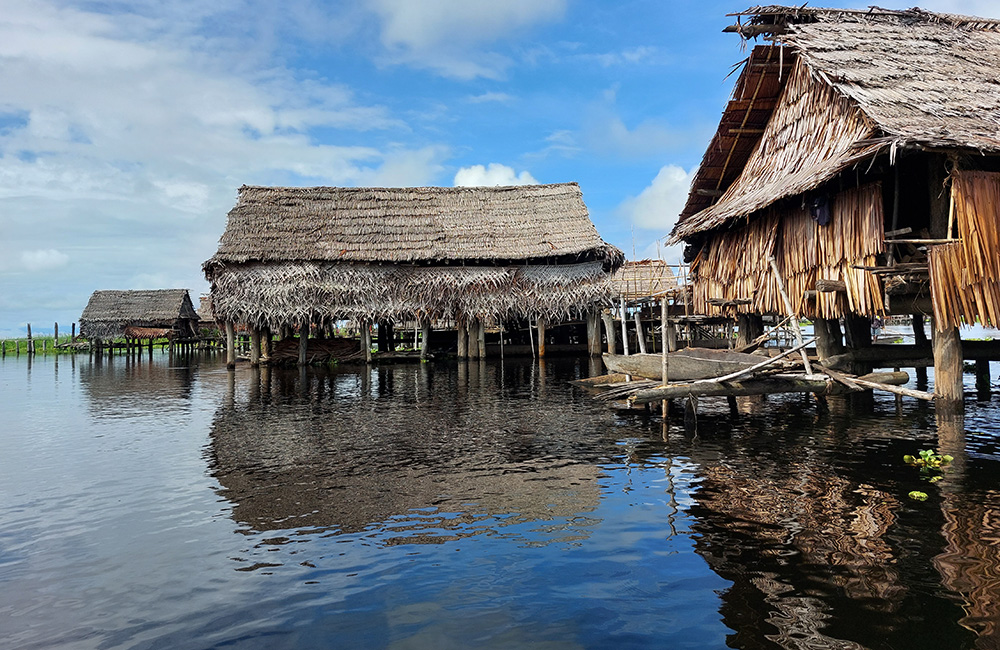
Health clinics dotted along the Sepik River are often under resourced and oversubscribed.
Womenalyn is the Sister in Charge at Samban Health Centre, our first stop. She’s arranged a small tractor to haul the supplies to the health centre where our team expertly get to work with the installation. The solar panels are fitted to the roof and the generator is placed in the mothers’ ward. A quick test of the new light switch confirms that power is flowing.
Womenalyn is thrilled. “We are grateful for this light which will help us especially in the night when we’re attending to mothers who come to give birth here,” she says.
Satisfied with our work, we motor back downriver for a night of rest.
The challenges of remote nursing
Early the next morning we board the dingy again, this time headed to Marienberg, a 30–40-minute ride. The small community’s health centre is also located just on the Sepik River and has many worrying challenges. Sometimes, when the river floods it goes right up to the maternity ward.
Nursing Officer in Charge, Sister Vanessa, tell me it’s not only extreme weather events that make her work challenging, but the lack of electricity makes it next to impossible to work on patients during the night.
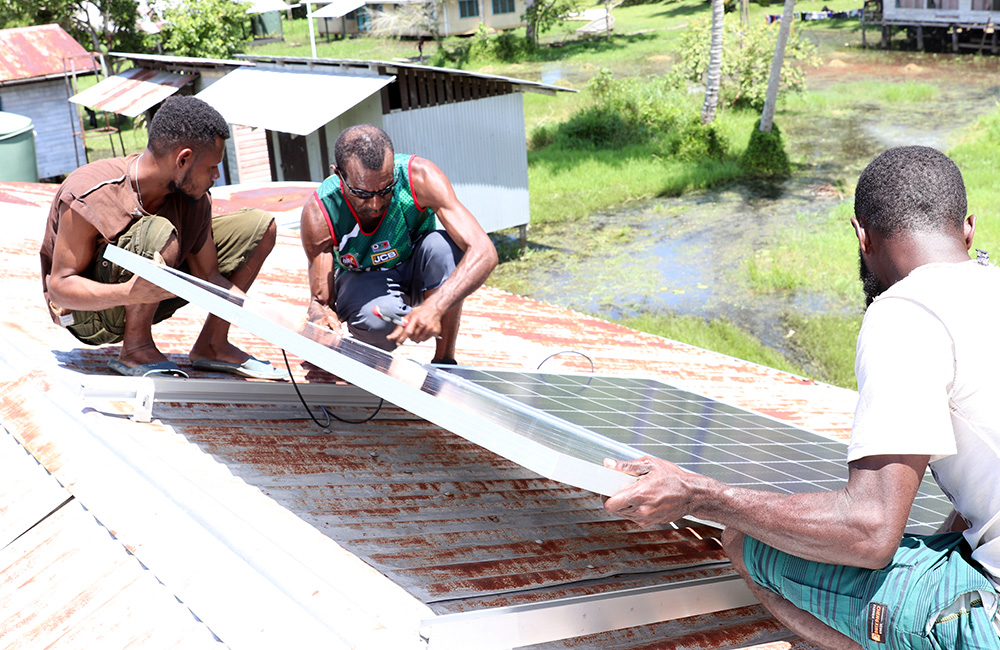
Our team installs solar panels at Marienberg Sub-Heath Centre.
She says, “many of the patients must be treated with the help of medical equipment that uses power, such as asthma patients who need a nebulizer or pregnant women who give birth in the night.”
The nurse explains in a mix of Tokpisin and English that when her staff attend to women in labour at night, the only way to have light is to hold a torch in their mouths. “Mipla sa kaikai torch lo maus lo nait taim mipla wok lo ol mama so our hands are free to work on the mothers,” she says. “we try out best,” she adds, smiling.
Our team lay the twin solar panels on the roof of the health facility and attach the backup generator so Vanessa and her staff will now be able to see what they’re doing. Vanessa is grateful for the help her clinic has received to deliver babies more safely.
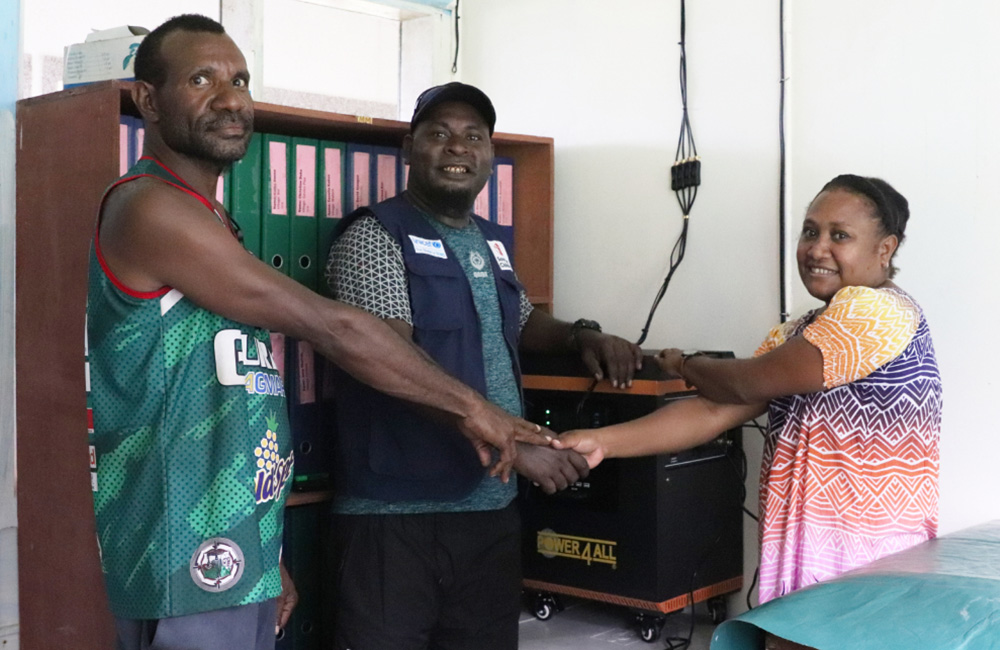
Lester from the East Sepik Public Health Authority and Ronald from Save the Children hand over the generator
to Marienberg’s Nursing Officer in Charge, Vanessa.
Thanks to the support of the Australian Government and our partnership with the Provincial Health Authority, we’ve supported a total of 32 remote health facilities in three provinces to receive solar panels and generators, including in the Autonomous Region of Bougainville and in Western province.
Being able to see firsthand the work we’re involved in to help bring light to remote facilities such as in Samban and Marienberg is something I’m so thankful for. I hope we can continue to help more mothers safely deliver their babies in East Sepik and across the country.
Watch this video to see our team travel up the Sepik River and power up remote health facilities.